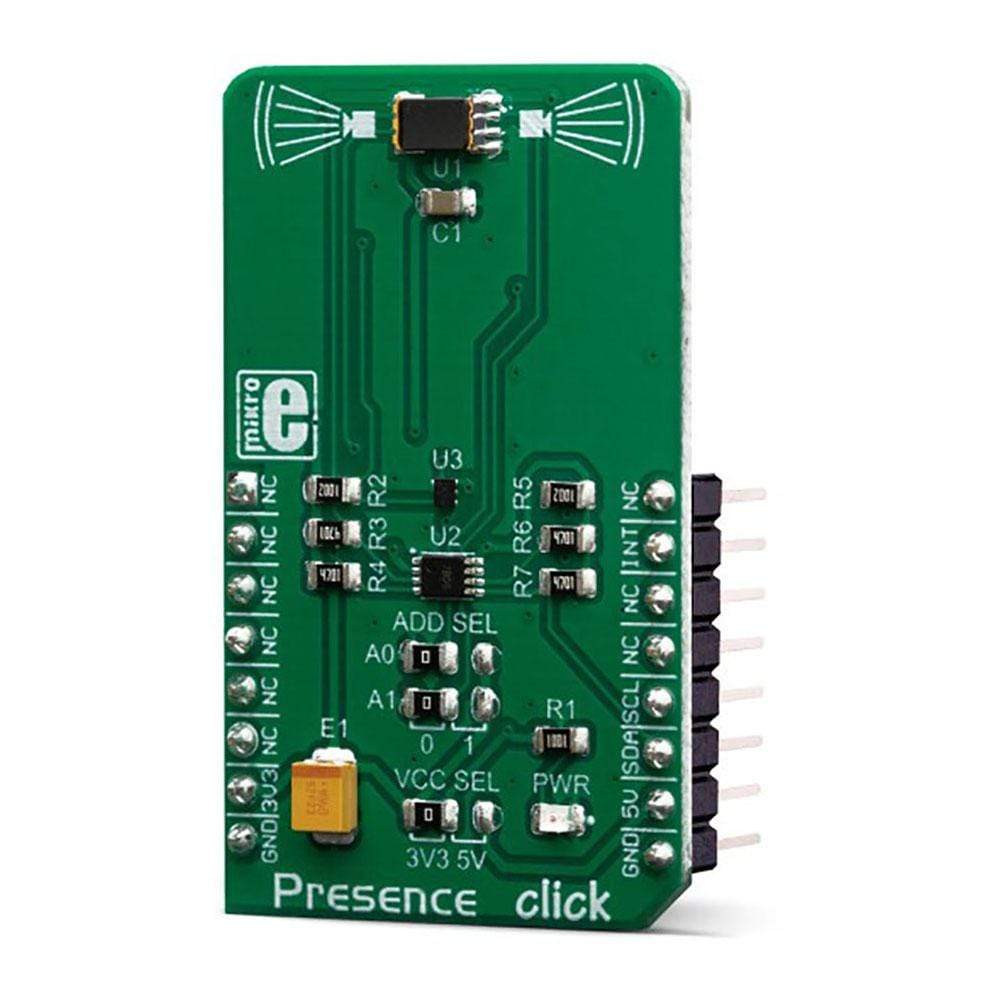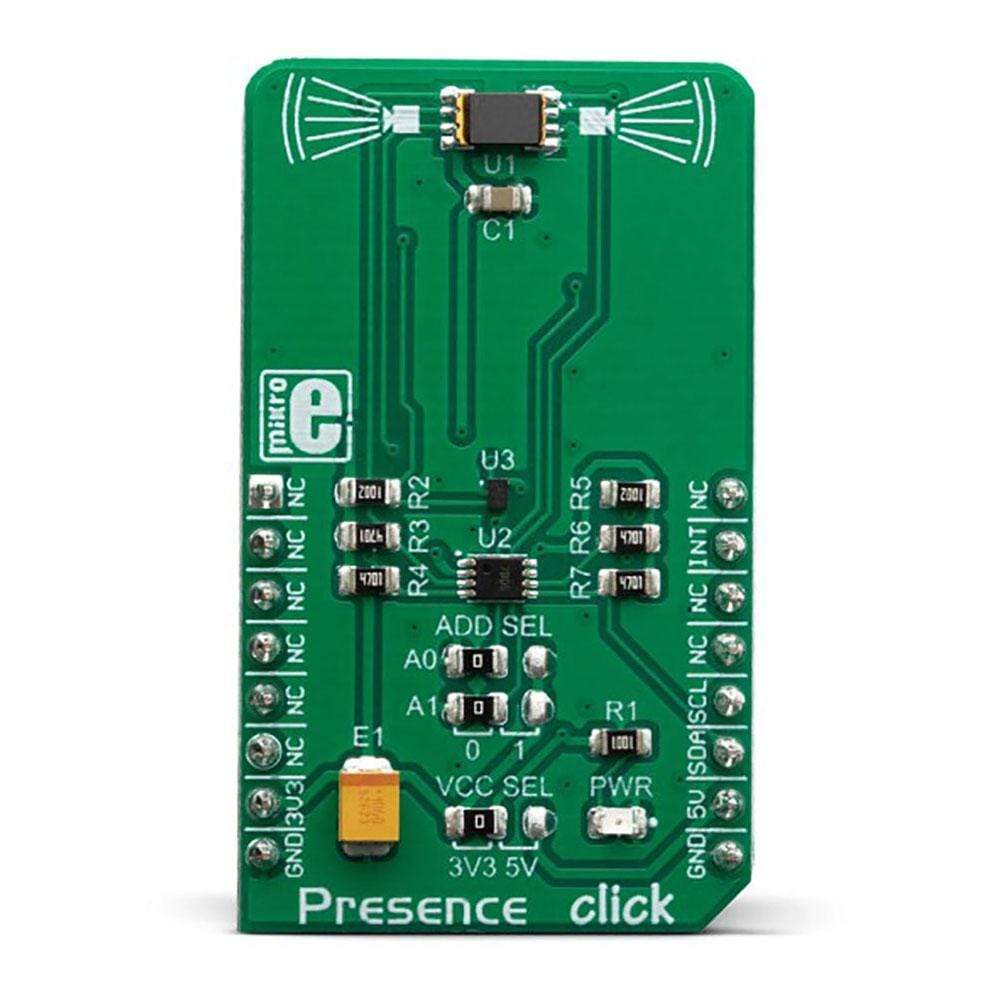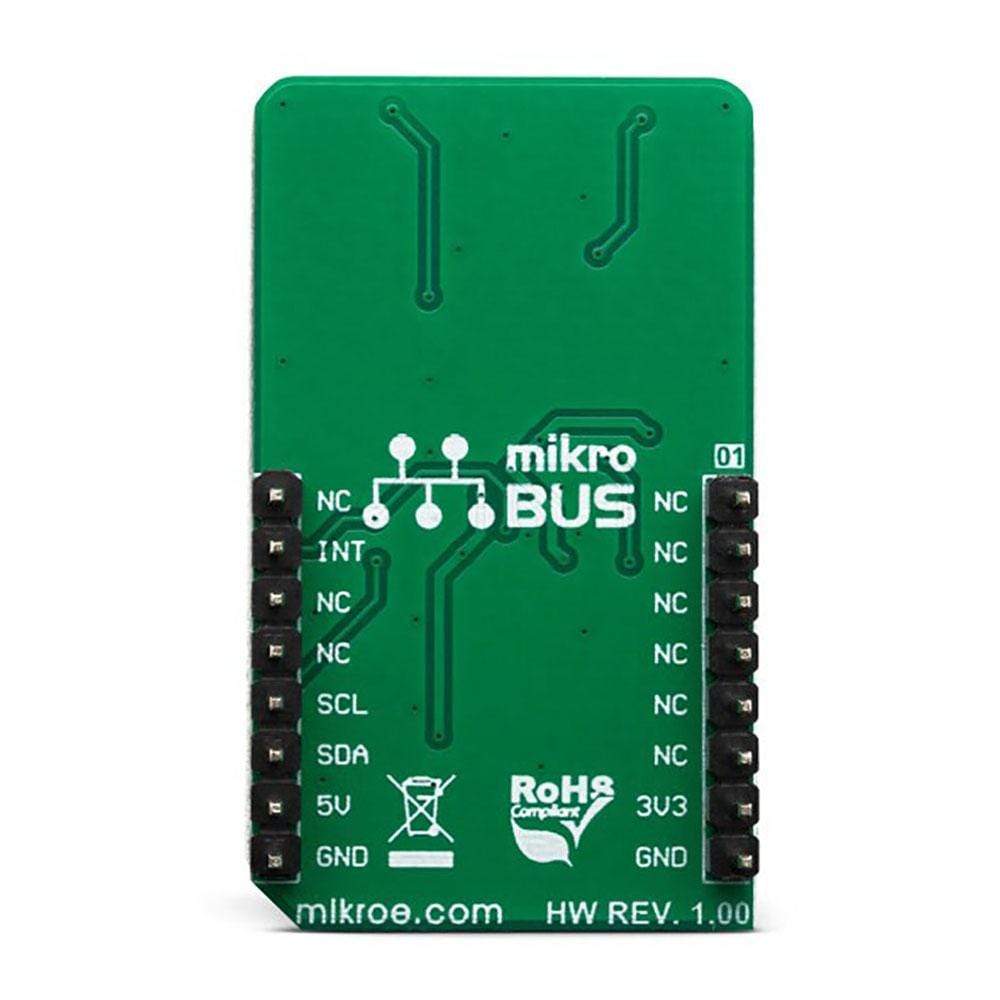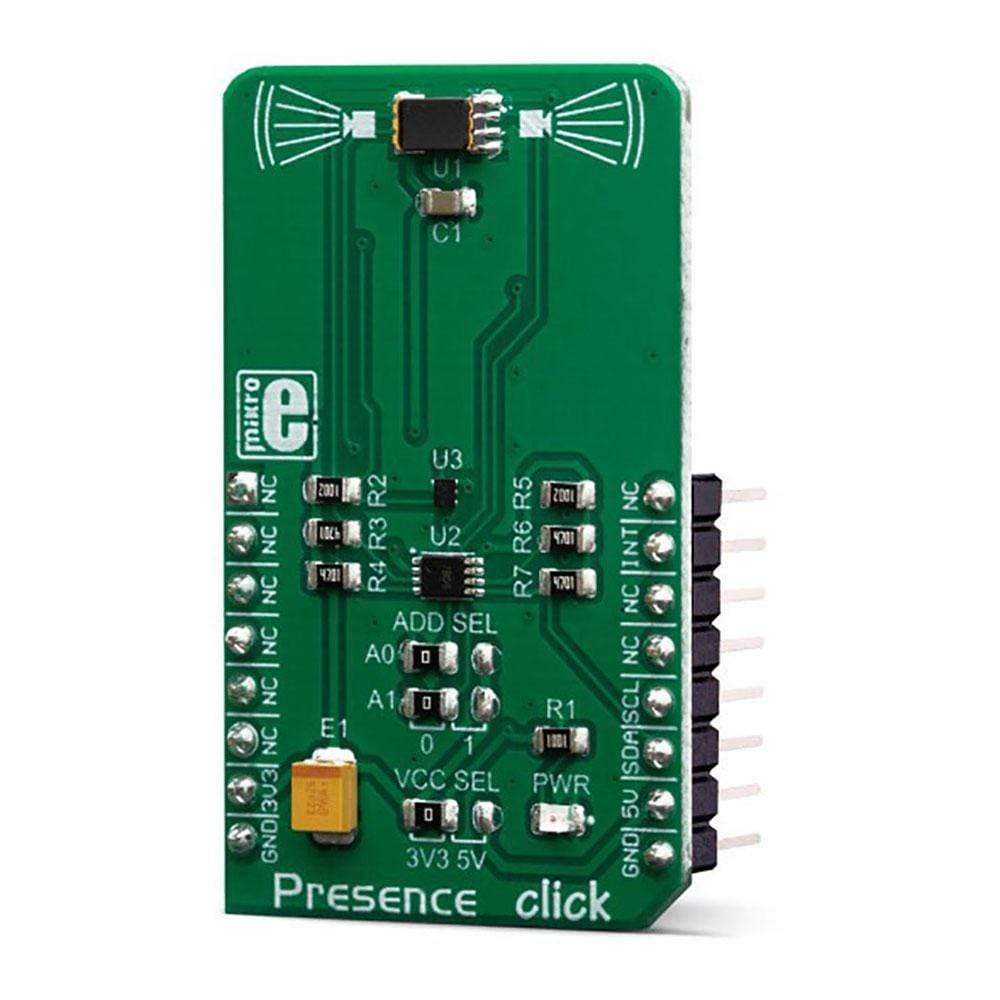
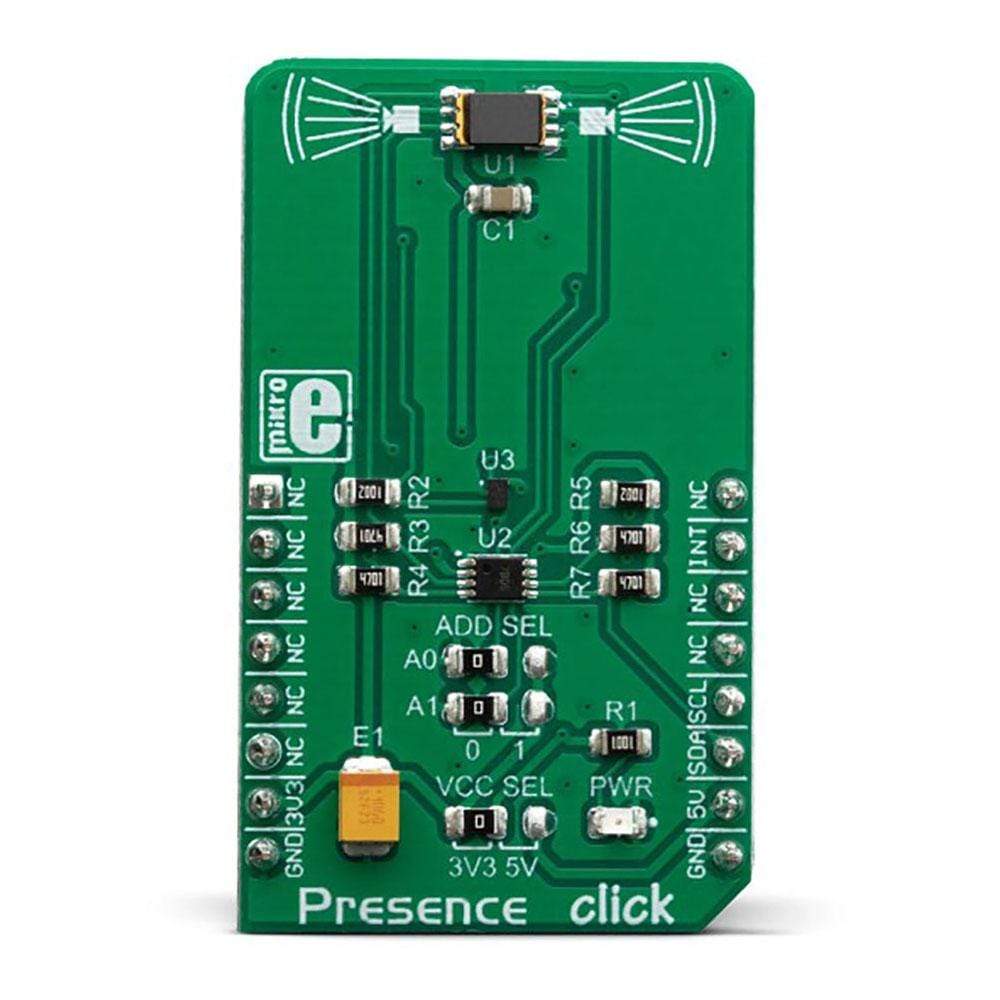
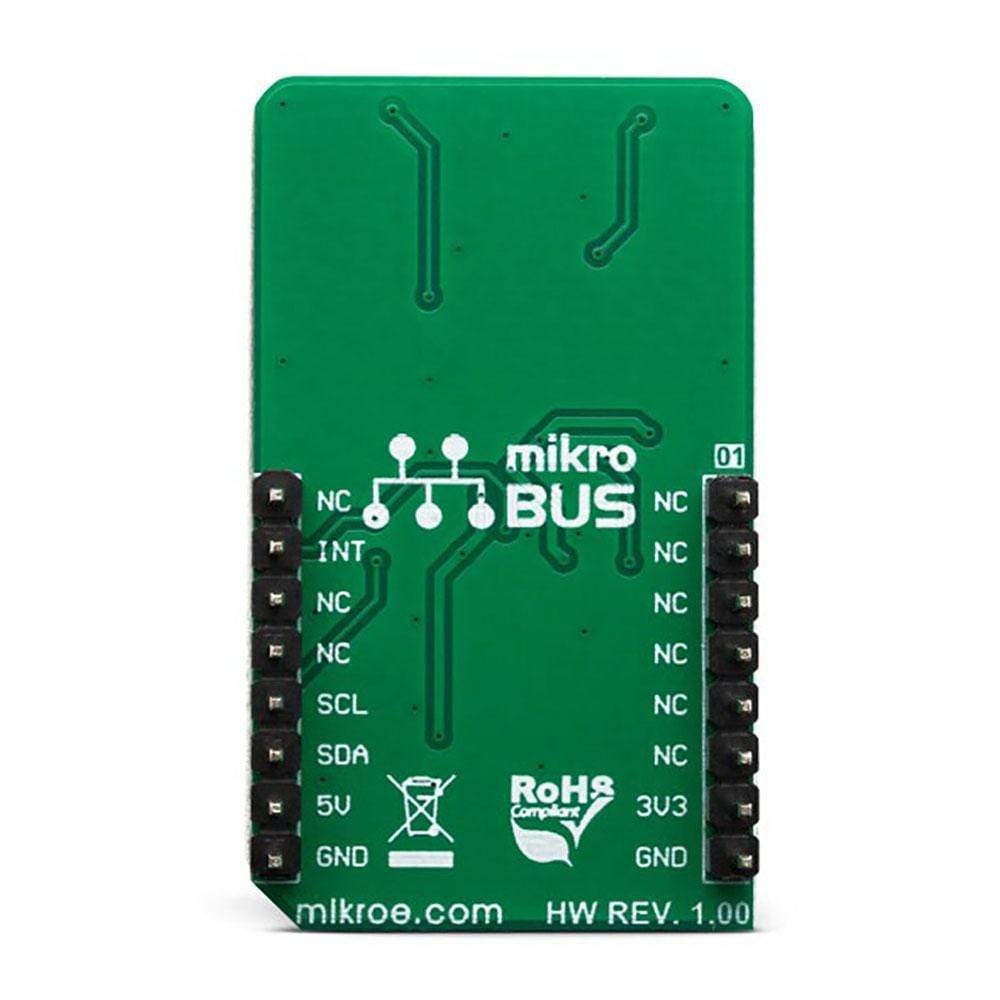
Overview
The Presence Click Board™ is an infrared sensing Click Board™ which can be used for presence sensing, motion detection, and a remote overtemperature protection. Presence Click Board™ is equipped with the TPiS 1S 1385, a thermophile sensor from CaliPile™ series.
The TPiS 1S 1385 has an integrated signal processing circuitry, making it perfectly suited for portable and battery-operated applications. A wide field-of-view (FOV) and high resolution allow for both high sensitivity and operation without lenses, which makes the TPiS 1S 1385 an ideal solution for low-profile and space constrained applications.
Downloads
Das Presence Click Board™ ist ein Click Board™ mit Infrarotsensor, das zur Anwesenheitserkennung, Bewegungserkennung und als Fernübertemperaturschutz verwendet werden kann. Presence Click Board™ ist mit dem TPiS 1S 1385 ausgestattet, einem thermophilen Sensor der CaliPile™-Serie.
Der TPiS 1S 1385 verfügt über eine integrierte Signalverarbeitungsschaltung und ist daher perfekt für tragbare und batteriebetriebene Anwendungen geeignet. Ein weites Sichtfeld (FOV) und eine hohe Auflösung ermöglichen sowohl eine hohe Empfindlichkeit als auch den Betrieb ohne Objektive, was den TPiS 1S 1385 zu einer idealen Lösung für Anwendungen mit niedrigem Profil und eingeschränktem Platzangebot macht.
| General Information | |
|---|---|
Part Number (SKU) |
MIKROE-3575
|
Manufacturer |
|
| Physical and Mechanical | |
Weight |
0.018 kg
|
| Other | |
Country of Origin |
|
HS Code Customs Tariff code
|
|
EAN |
8606018715886
|
Warranty |
|
Frequently Asked Questions
Have a Question?
Be the first to ask a question about this.

